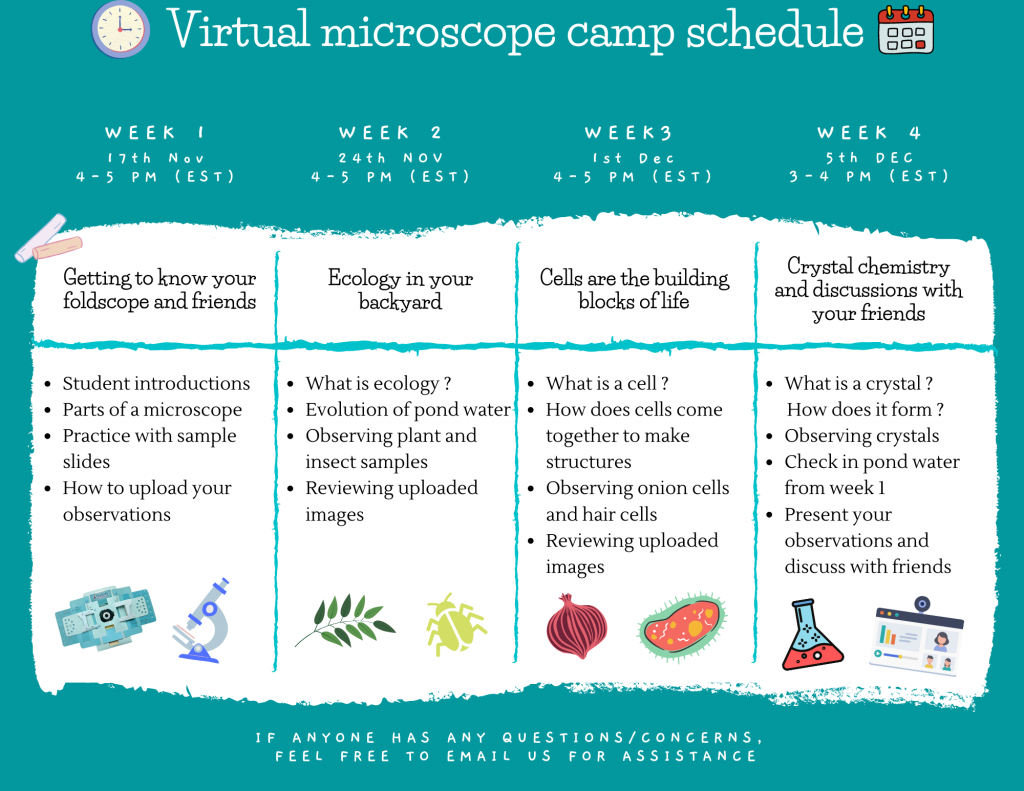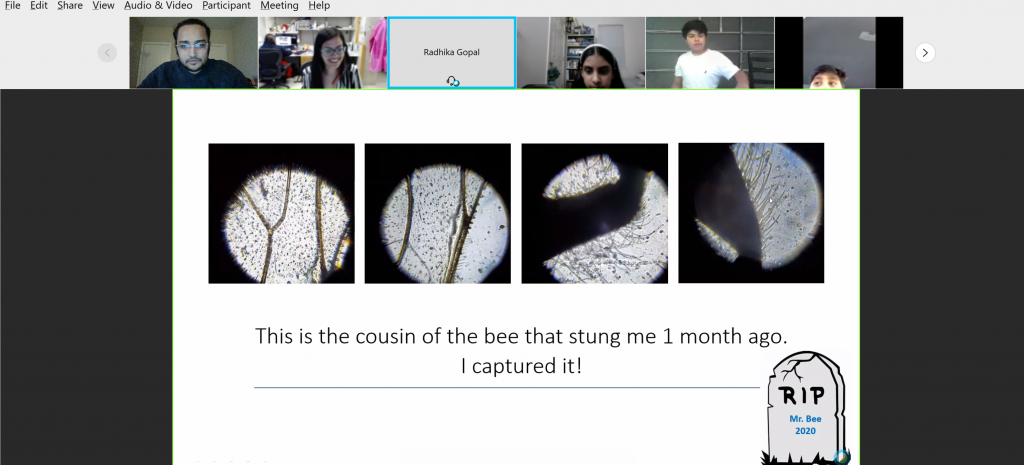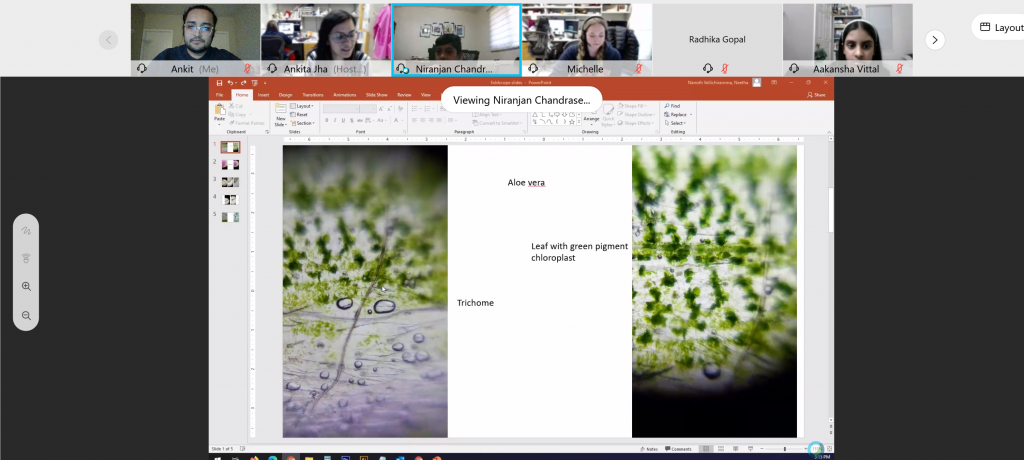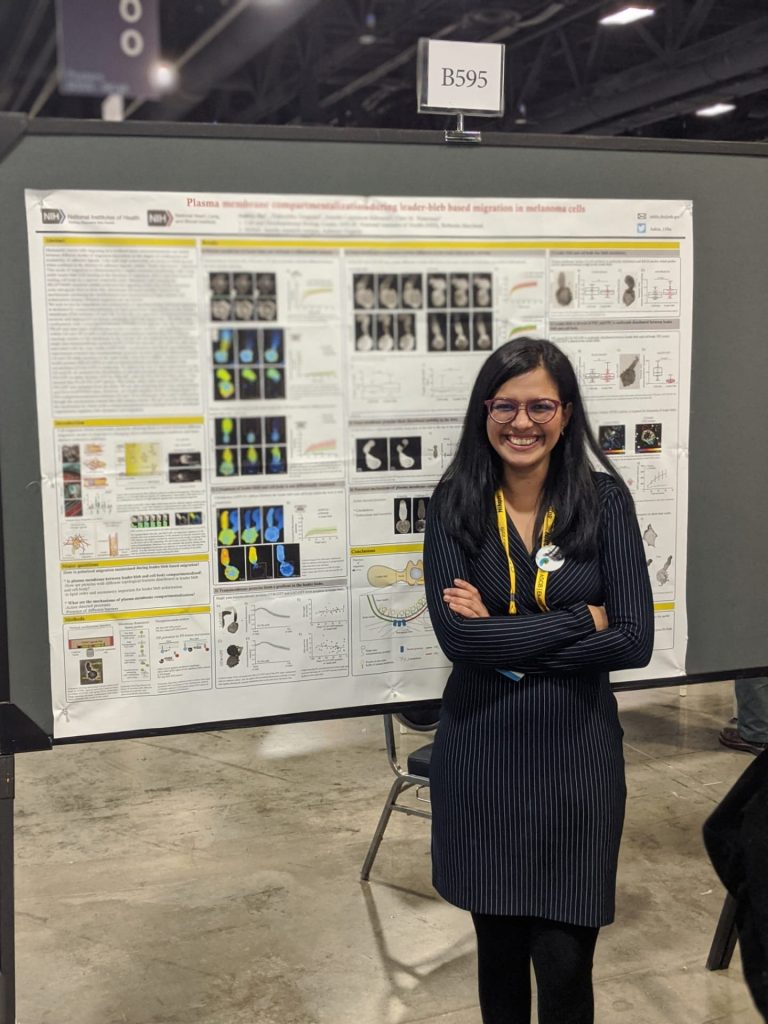“Outreach during a pandemic, it can be done!” – Virtual Microscopy Camp
Posted by Ankita Jha, on 1 January 2021
I’ve always believed public outreach and education activities are vital to our role as scientists. While both are familiar concepts to many of us, often they are unappreciated as important parts of our scientific training and journey. This has become increasingly relevant during this year, where a rise in public mistrust and misunderstanding of the scientific process, has only made the pandemic worse. For me, this pandemic began with suddenly leaving the lab, my microscope and experiments collecting dust, while I sat at home, hoping for it to end soon.
For the first month, I was just staring at the computer, trying to keep it together by reading scientific papers and thinking about my project. However, I was also looking at the case numbers growing, feeling anxious with the frequent reports and newscasts calling this pandemic a hoax. This misinformation and fearmongering only further cemented my belief about the importance of science outreach ,and why it is crucial that the public understands the basic concepts of science. I decided to turn my anxiety into action. I reached out to look for virtual outreach opportunities and came across the American society of cell biology (ASCB) COMPASS outreach grant, which enables funding for graduate students and post-docs to do outreach activities. I decided to propose an outreach project utilizing my love for microscopy and the ingenious Foldscope, developed by Manu Prakash and Jim Cybulski. Foldscope is a low cost, easy to assemble paper microscope that was developed to provide a research and educational tool to communities across the globe https://www.foldscope.com. However I thought it could also be a fantastic tool to send to students, encouraging them to learn how to make observations and hypotheses. Providing a framework for understanding the fundamentals of the scientific method utilizing the world around them.
My excitement had no bounds when I received an email informing that I got the grant. I instantly decided to bring more people into this and was very fortunate to have support from some incredible scientists. Michelle Baird (Senior graduate student, NIH), Ankit Dwivedi (Post-doc, University of Maryland School of Medicine) and Ikbal Choudhury (Graduate student, Johns Hopkins university) decided to jump on the ship and worked tirelessly organizing the lesson plans, designing materials and reaching out to the schools to get students registered. We decided on a four part lesson plan, largely based on the samples we thought most students would have access to. We only had the budget to purchase 30 foldscopes, but we received such immense interest, we ended up having to turn people away. We decided to divide the students into two groups, based on their time-zones, and for the next four weeks we met for an hour, to cover topics like ecology, cells and tissues and chemistry.

We were amazed by the dedication and enthusiasm kids from the ages of ~9 to 13 years demonstrated to us! They were extremely inquisitive and exceptional in their observations, many keeping a very detailed notes about their observations. For many students, this was the first time they were handling a microscope, and were seeing the details in things like leaves, flowers and insects. It reminded me of the scientific excitement, I felt the first time I looked into a microscope, and observed cells moving and dividing before my eyes. They also enjoyed a virtual tour of our lab at NIH, where they could compare the differences between their foldscopes and a spinning disc confocal microscope. This whole journey was something magical for us! It began with having some fun and teaching some science to the next generation, but it has brought us all so much closer to science and to each other. In the hassle of our daily scientific life, with experiments not working, stress of jobs and publishing, we can forget why we began to do science in the first place. The simple joy of discovery. The wonderful observations from the students are collected in our website https://outreach-projects-scientists.weebly.com/.


I would like to thank the very talented and passionate kids who took part in this whole process and have made such an impact on our lives. Hopefully some of them will grow up to become researchers themselves. I would also like to personally thank American society of cell biology (ASCB) COMPASS outreach team for giving me this opportunity. As well as the Foldscope team and the Prakash lab, for their immense contribution towards frugal science, enabling us to do such outreach events. Last but not least, I would like to thank my team, Michelle for being such an amazing instructor and working so hard on designing lesson plans and collecting samples for teaching, your enthusiasm for teaching has touched me so much throughout this process, Ankit for working tirelessly to design course work, pamphlets, certificates and creating an online platform where students can showcase their findings, your creativity and feedback has been very important, and Ikbal for bringing his love for frugal science, his ideas, and his skill in keeping students engaged (especially when we had technological issues!). With this experience, we are determined to continue our outreach activities and are looking for more opportunities and grants to do this. We would also like to welcome and encourage any scientists who are interested in being a part of this initiative to get involved. If you would like to reach out, or join a future outreach project to us, please contact us at outreach.projects.scientists@gmail.com.
This outreach has taught me how these small activities can encourage young minds and surge their interest in STEM. If we scientists, would like to increase public’s interest in science, one effective way would be to approach students in young age. This is something very beneficial for scientists as well. I felt very rewarded when I saw the eagerness and enthusiasm in students. This has helped me increase my affection for science and sheer joy we get out of observing. It has also taught me new skills in effectively organizing events, understanding unique strengths of each team member and delegating work accordingly and then working collaboratively. This has also increased my aptitude for teaching. I am pumped to look for more opportunities where we can organize more activities on science out-reach.

Ankita Jha – She is a postdoctoral fellow in Dr. Clare Waterman’s lab at NIH. Her scientific work focusses on plasma membrane organization and establishment of front-rear polarity during bleb based migration in cancer cells. Apart from microscopy, she is also very active in open science communities and enjoys writing preLights. She is very enthusiastic about collaborative STEM out-reach activities.


 (5 votes, average: 1.00 out of 1)
(5 votes, average: 1.00 out of 1)